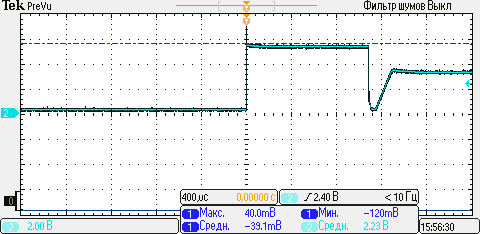At the moment when I insert the USB cable, at the output of the converter, 5 volts appears for a short time. Why is this happening?
BUT! When I connect the ground oscillograph to the board, this effect disappears. The ground of the oscillograph and the computer are connected in an electric outlet.
This effect is a measurement error or an error in the circuit?


